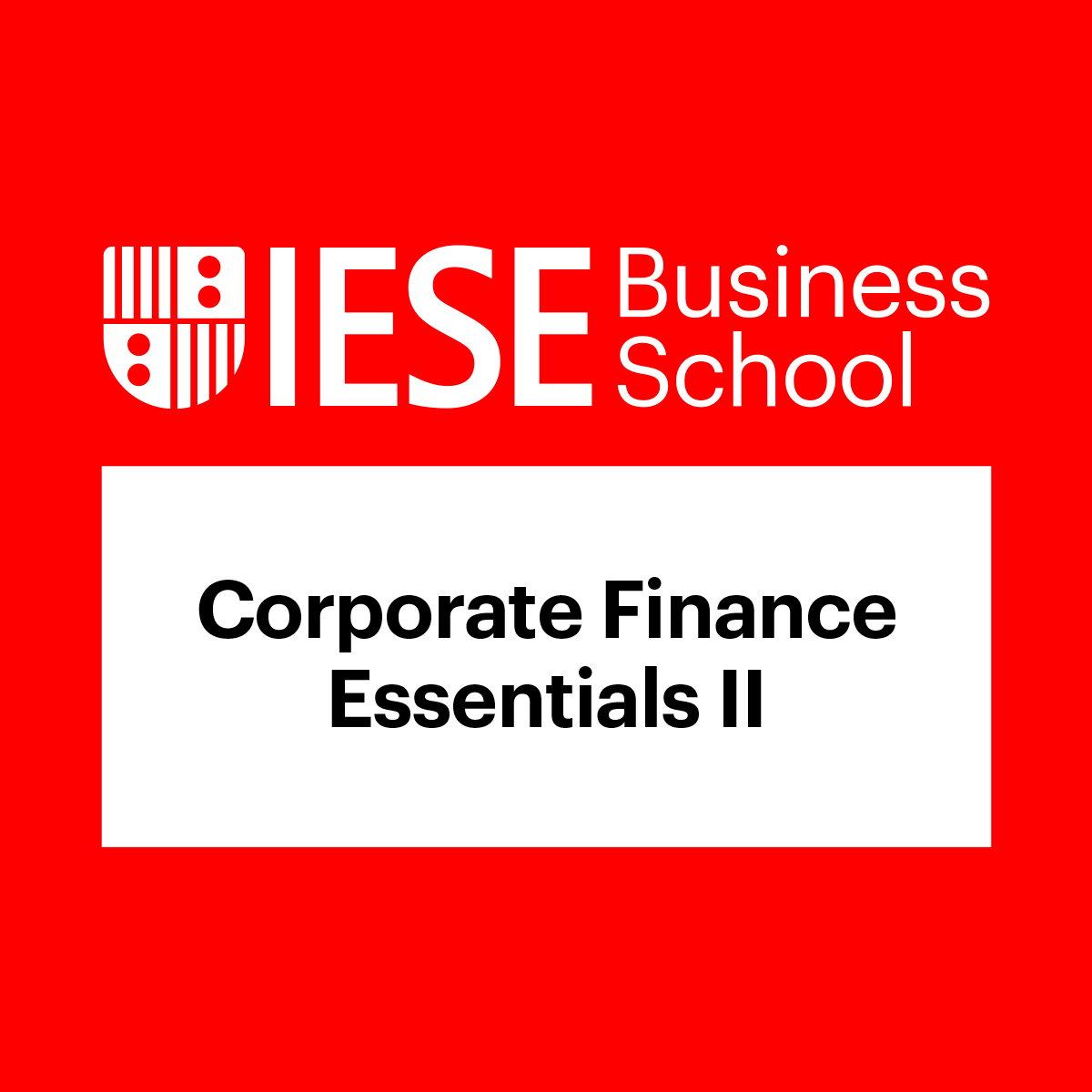Back to Courses









Finance Courses - Page 20
Showing results 191-200 of 270

Trading Algorithms
This course covers two of the seven trading strategies that work in emerging markets. The seven include strategies based on momentum, momentum crashes, price reversal, persistence of earnings, quality of earnings, underlying business growth, behavioral biases and textual analysis of business reports about the company.
In the first part of the course, you will learn how to read an academic paper. What parts to pay attention to and what parts to skim through will be discussed here. For every strategy, first you will be introduced to the original research and then how to implement the strategy.
The first strategy, Piotroski F -score will be discussed in detail. You will be taught how to calculate the F - Score and how to use this score in a strategy. This is followed by the next strategy, Post earnings announcement drift (PEAD).
Financial Management Capstone
The Financial Management capstone will provide a learning experience that integrates across all the courses within this specialization. You will analyze a situation taking the vantage point of a company and develop a financial management plan (for instance, a global company working in a specific geography chosen by students’ region or country of residence, or other consideration). You will design a deliverable to create value from the perspective of potential employers while achieving pedagogical and experiential goals.
This course is part of the iMBA offered by the University of Illinois, a flexible, fully-accredited online MBA at an incredibly competitive price. For more information, please see the Resource page in this course and onlinemba.illinois.edu.

Corporate Finance Essentials II
This course picks up where Corporate Finance Essentials left, addressing other corporate
finance issues not addressed in the previous course, such as market efficiency, bonds, stocks,
capital structure, and dividend policy.
This course will help you to:
● Understanding the concept of market efficiency.
● Get an overview in issues related to bonds, such as type of bonds, their return (yield to maturity) and default risk
● Getting to know the valuation of stocks through the method of relative valuation (multiples)
● Knowing what are the sources that financial companies use to obtain capital for their projects
● Understanding two of the most critical decisions companies need to make: whether to pay dividends and if so, how much.
Introduction to Finance: The Role of Financial Markets
In Introduction to Finance: The Role of Financial Markets, you will be introduced to the basic concepts and skills needed for financial managers to make informed decisions. With an overview of the structure and dynamics of financial markets and commonly used financial instruments, you will get crucial skills to make capital investment decisions. With these skills, you will be ready to understand how to measure returns and risks and establish the relationship between these two. The focus of this course is on basic concepts and skill sets that will have a direct impact on real-world problems in finance. The course will enable you to understand the role of financial markets and the nature of major securities traded in financial markets. Moreover, you will gain insights into how to make use of financial markets to create value under uncertainty.

Global Financial Markets and Instruments
Get a running start in the high-stakes world of financial investment! This first course is designed to help you become an informed investor by providing you with the essential concepts for long-term success in managing money.
You’ll start by learning the role of financial markets and financial assets in a well-functioning economy. From there, you’ll learn about the wide range of financial instruments available in major asset classes, their features and valuations. You’ll explore how financial markets actually operate in the real world, focusing on how and where securities are traded and how various market types differ from one another in practice. You will also learn the basics of algorithmic trading, dark pools, buying on margin and short selling.
By the end of the course, learners will be able to:
• List and distinguish the different financial instruments available to an investor
• Compare global financial markets
• Explain the features of equity, debt, and derivative instruments
• Define traditional and alternative asset classes
• Discuss different trading venues and mechanics of securities trading
• Discuss the current trends affecting today’s financial markets
This course is designed to be accessible for students of all knowledge levels and gives you the actionable foundation needed to manage money in a post-crisis world.
________________________________________
WEEK 1
Module 1: Introduction & Review of Elementary Finance Tools
This module introduces the Investment and Portfolio Management Specialization, which is made up of four courses. This module discusses how the first course, Global Financial Markets and Assets, is organized. It outlines the different stages of the investment management process, which guides the focus of the Specialization. It also reviews basic finance concepts and tools such as time value of money, computing returns, discounting and compounding.
Topics covered include:
• Familiarize with the organization of the class
• Meet the professor and your peers
• Explain the investment management process
• Review elementary concepts in finance
• Compute present value or future value of a single cash flow
• Compute present value of future value of a stream of cash flows
• Define an annuity or perpetuity
• Apply time value of money tools to solve basic mortgage, loan or retirement problems
________________________________________
WEEK 2
Module 2: Financial system & financial assets: fixed income securities
In this and the next two modules, we cover the key institutional features of financial markets and instruments. We ask the following questions: Why do financial markets exist? What role do they play? What are financial assets and how are they different than real assets? How does it all come together? Basically, this is where I hope you will get to see the big picture of the entire financial system and how it comes together.
Module 2 focuses on fixed income securities. We'll get started with a review of basics of bond valuation. You will learn about short-term money market instruments, U.S. Treasury securities as well as corporate bonds. After module 2, you will be able to describe fixed income securities, be familiar with their institutional features, and identify their cash flows. Finally, you will learn how to value fixed income securities such as Treasury bills, zero-coupon or coupon-bonds and compute yields.
Topics covered include:
• Explain the roles of financial markets
• Distinguish between real and financial assets
• Define and explain money market instruments, zero-coupon and coupon- bonds and features
• Identify the cash flows associated with fixed-income securities
• Define and explain bond market features
• List the different types of Treasury securities and explain pricing and quoting conventions
• List and define other long-term debt instruments such as corporate bonds, mortgage-backed securities, sovereign debt
• Find the value of a zero-coupon or coupon-bonds
________________________________________
WEEK 3
Module 3: Financial system & financial assets: equity securities and derivatives
In Module 3, we continue our overview of financial markets and instruments. We next focus on two other major asset classes: equity securities and derivative instruments. You will learn about how equity differs from fixed income securities, the cash flows associated with stock and preferred stock and how to find the value of a share. You will also learn about option strategies. After completing module 3, you will be able to describe all major asset classes, including derivative instruments such as options, forwards and futures. You will be able to explain how these differ from each other and their payoffs.
Topics covered include:
• Distinguish between equities and fixed income securities
• Define and explain the features of equity securities
• Identify the cash flows associated with equity securities
• Explain dividend discount model
• Find the value of a share of common stock or preferred stock
• Define and list different types of derivative securities
• Explain option payoffs
• Distinguish between a forward and futures contract
• Explain forward and futures payoffs
• Identify traditional and alternative asset classes
________________________________________
WEEK 4
Module 4: Organization of financial markets and securities trading
In this module, we discuss how financial markets actually work. We will talk about different trading venues and the mechanics of securities trading. I will emphasize a lot of terminology and the latest trends in securities trading to familiarize you with the institutional workings of financial markets. After this module, you will be able to compare different trading venues, trading mechanisms, and be able to explain different types of orders, including transactions like margin buying and short- selling; you will be familiar with the language and terminology you need in order to become an informed practitioner of investments.
Topics covered include
• Explain the roles of corporations, households, government, and financial intermediaries in the financial system
• Explain price discovery process
• Define different type of orders
• Distinguish between dealer vs. auction markets; different trading platforms
• Explain margin buying and short-selling transactions
• Understand the current trading environment such as algorithmic or high frequency trading, dark pools etc.

Bitcoin Price Prediction using Facebook Prophet
In this 1.5-hour long project-based course, you will learn how to create a Facebook Prophet Machine learning Model and use it to Forecast the Price of Bitcoin for the future 30 days.
We will begin by importing all the necessary libraries including Facebook Prophet. Then we will import our dataset and analyze it. Then we will start creating visualizations in Plotly express in order to understand the historical performance of Bitcoin. We will then prepare our data for Facebook Prophet and create a Facebook Prophet Machine learning Model. We will then fit our prepared data to the Facebook Prophet Model and command it to make a Forecast for the future 30 days. We will then Visualize the Forecast using the Prophet’s internal visualization tools and then download the Forecast data.
In the final section, we will go to Google Sheets and learn to extract Financial data of Bitcoin using Google Finance. We will then import the Forecast data into Google Sheets and compare it against the actual data and evaluate the performance of the Model.
Please note that although this project deals with Bitcoin and teaches to make Price predictions, it is for educational purposes only and should not be taken for a piece of Financial advice since Cryptocurrencies like Bitcoin are extremely volatile and speculative.
Basic knowledge of Python programming language is recommended but even those with no prior programming experience will be able to complete this project. You will need a Google account to complete this project.
Note: This course works best for learners who are based in the North America region. We’re currently working on providing the same experience in other regions.

Measuring Stock Liquidity
In this 1-hour long project-based course, you will learn how to use Average Daily Traded Volume and Share Turnover to measure liquidity, use Depth of Market (DOM) and Bid-Ask Spread to compare liquidity, and use Variance Ratio to quantify liquidity.
Note: This course works best for learners who are based in the North America region. We're currently working on providing the same experience in other regions.
This course's content is not intended to be investment advice and does not constitute an offer to perform any operations in the regulated or unregulated financial market.

Recording in Journals & Posting in Ledgers
This course covers the basic procedures involved in recording financial entries in Journals and Ledgers. Upon completing this course, you will be able to analyze and record various business transactions. You will also learn about the accounting cycle, posting transactions, accrual accounting, and cash accounting. You will also have the opportunity to practice these skills through a series of activities that provide real world experience.

GST - Genesis and imposition!
This is the first course in PwC GST Taxation Executive Professional Certificate. This is a good place to start if you want to become a GST professional in India.
In this course, you will first learn about the genesis of GST, the need for its introduction, and the Constitutional and legal framework under which it was introduced. You will then learn the concept of ‘supply’ under GST along with its related definitions and concepts.
This course provides a platform for learners planning to launch their careers in tax or sharpen their skills with the technical understanding of the GST law in India. The course is a part of the PwC GST Taxation Executive Professional Certificate which is industry agnostic and relevant for anyone looking to acquire basic knowledge of GST. It will provide you with the skills required for entry level jobs in the fields of finance, tax, or law.
By the end of this course, you will:
- Know the shortcomings of the earlier indirect tax regime and why GST was introduced
- Know the basic framework of GST in India and the changes brought in the Indian Constitution for introducing GST
- Understand the concept of supply under GST and related definitions like goods, services, and consideration
- Understand which goods and services are included or excluded from GST
- Understand the various types of supplies (viz. inter-State, intra-State, exempt, non-GST, composite, and mixed supplies), and how they impact the computation of GST.

Private Equity and Venture Capital
The course deals with the analysis of the private equity and venture capital business.
Over the course, students will be provided with a deep understanding of the mechanism underpinning the creation and/or development of a firm and the financial support it can get from the financial system through venture capital investment.
The course tries to discover how special financial intermediaries (called private equity investors) finance through equity companies belonging to different stages of their life-cycle, starting from the very beginning (startup and early stage) to a more mature phase (i.e. expansion, mature age, etc.) or also staying into crises and decline.
Private equity (named venture capital when the company is in the first phases of its life cycle) deals with very different activities, such as scouting, advisory, deal-making, valuation, and financing as financial intermediaries see it.
COURSE SYLLABUS
The course is made up of four different modules:
WEEK 1 - Introduction to Private Equity and Venture Capital
WEEK 2 - Discovering Private Equity Investors: Legal Issues and Taxation
WEEK 3 - Management of Private Equity and Venture Capital Funds
WEEK 4 - Company Valuation And Deal Making In Private Equity Settings
WEEK 5 - Final Test
Throughout the course, guest speakers and practitioners will be interviewed to provide some examples of concrete applications of the contents presented.
RECOMMENDED BACKGROUND
An understanding of the basic concepts of corporate financing accounting principles is required, while prior knowledge of private equity and venture capital is not required however it is recommended, as this is a course designed to introduce you to the fundamental concepts in private equity and venture capital.
Popular Internships and Jobs by Categories
Find Jobs & Internships
Browse
© 2024 BoostGrad | All rights reserved